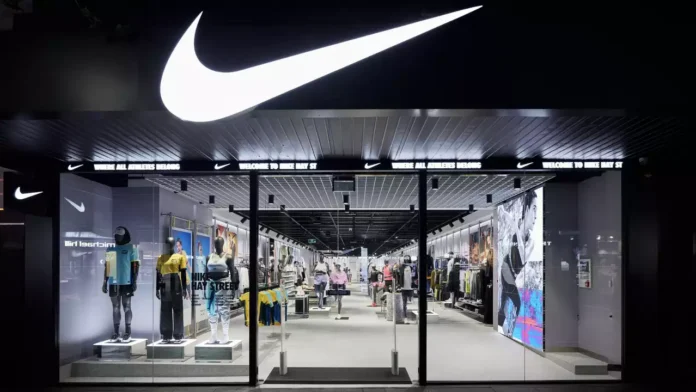On Thursday, Nike revised its yearly sales outlook, attributing the adjustment to conservative consumer spending, a less robust online business, increased promotional activities. The company also disclosed its intention to reduce supplies of critical product lines as a cost-management strategy, leading to an 11% decline in its shares.
The company said it aims to achieve $2 billion in savings over the next three years. This objective involves implementing measures such as tightening the supply of certain products, optimizing the supply chain, reducing management layers, and increasing the utilization of automation.
Nike’s wholesale business faces ongoing challenges, with retailers reducing orders due to fluctuating demand. This downturn is evident in online sales, compelling the company to increase promotions to attract dwindling shoppers. Additionally, sales in China have decelerated, reflecting the impact of the stumbling economy.
“We are seeing indications of more cautious consumer behavior around the world,” Nike’s finance chief Matthew Friend said on a post-earnings call.
Nike projected a roughly 1% increase in full fiscal-year revenue, marking a decline from its previous forecast of mid-single-digit percentage growth. According to LSEG data, analysts had anticipated a 3.8% increase.
“Nike’s talking about reducing the number of products … perhaps the company feels there are too many products that are not high-margin and not really generating significant sales,” David Swartz, senior equity analyst at Morningstar, said.
However, Nike also announced the introduction of newer styles aimed at captivating consumers, building upon the success of recent releases such as the Sabrina 1, LeBron 21, and Tatum 1 basketball shoes.
“In an environment like this when the consumer is under pressure and the promotional activity is higher … it’s newness and innovation which causes the consumer to act … that’s what’s going to pull us through a promotional marketplace,” Friend said.
Anticipating a boost in sales, Nike looks forward to the upcoming releases in the GT Cut, Book 1, and Kobe lines scheduled for the next three months.
Nike did not provide specific details on which product franchises it intends to reduce supplies for. However, the company noted that its iconic lines of sneakers, including Air Force 1, Dunk, and Court, were all experiencing strong performance.
The company recorded a total revenue of $13.39 billion in the fiscal second quarter, which concluded on Nov. 30, falling slightly short of estimates at $13.43 billion. Despite this, per-share earnings stood at $1.03, surpassing the expected 85 cents, thanks to lower freight costs and reduced inventories.
The company reported total revenue of $13.39 billion in the fiscal second quarter ending Nov. 30, falling short of estimates of $13.43 billion. Despite this, per-share earnings stood at $1.03, surpassing expectations of 85 cents, thanks to lower freight costs and reduced inventories.
As part of the streamlining, Nike expects around $400 million to $450 million in pre-tax restructuring charges, mainly linked to employee severance costs, in the third quarter.
Nike shares have experienced a gain of less than 5% this year, in contrast to the S&P 500 index, which has rallied by 24%, and rival Adidas, which has seen a notable gain of 52.5%.





